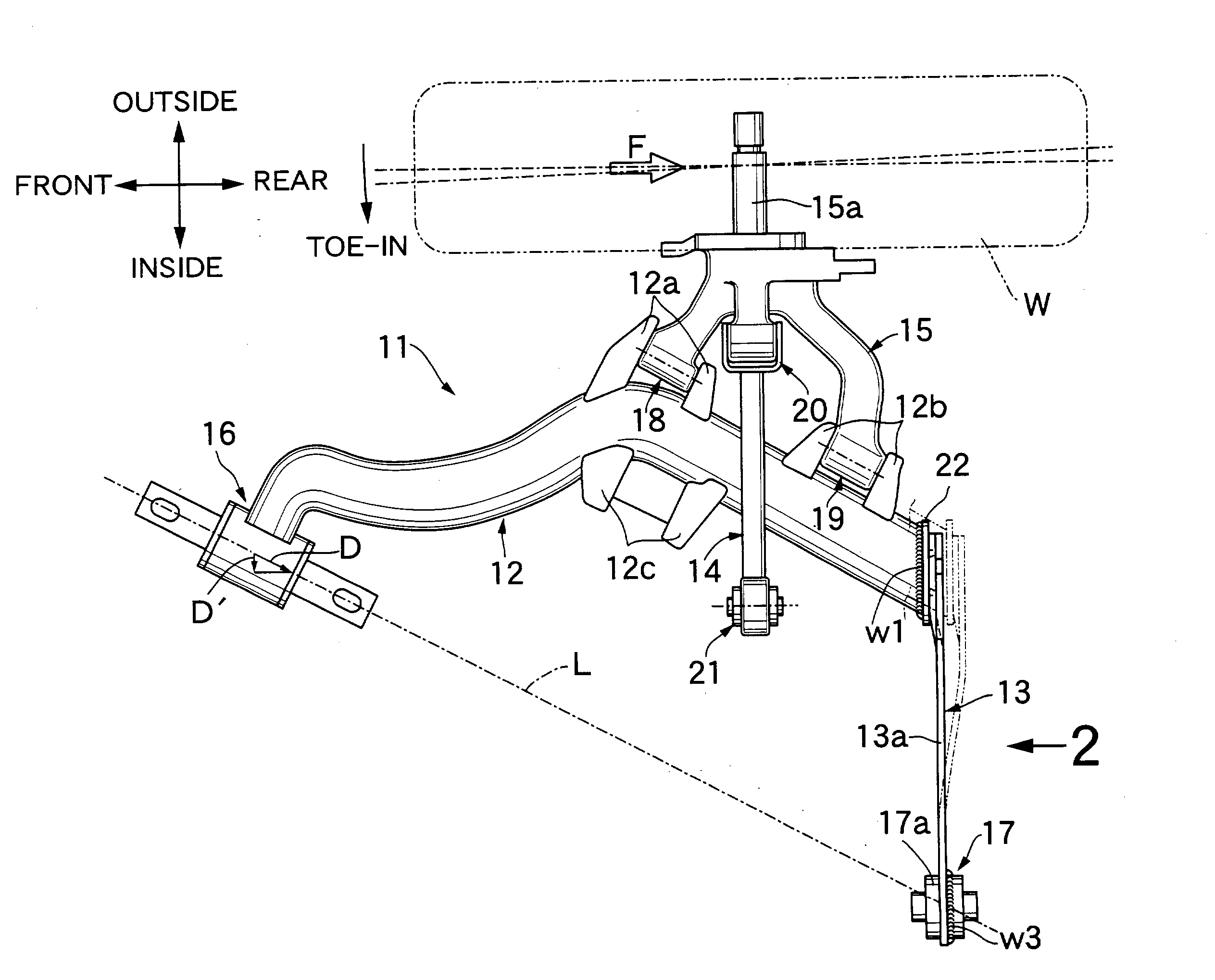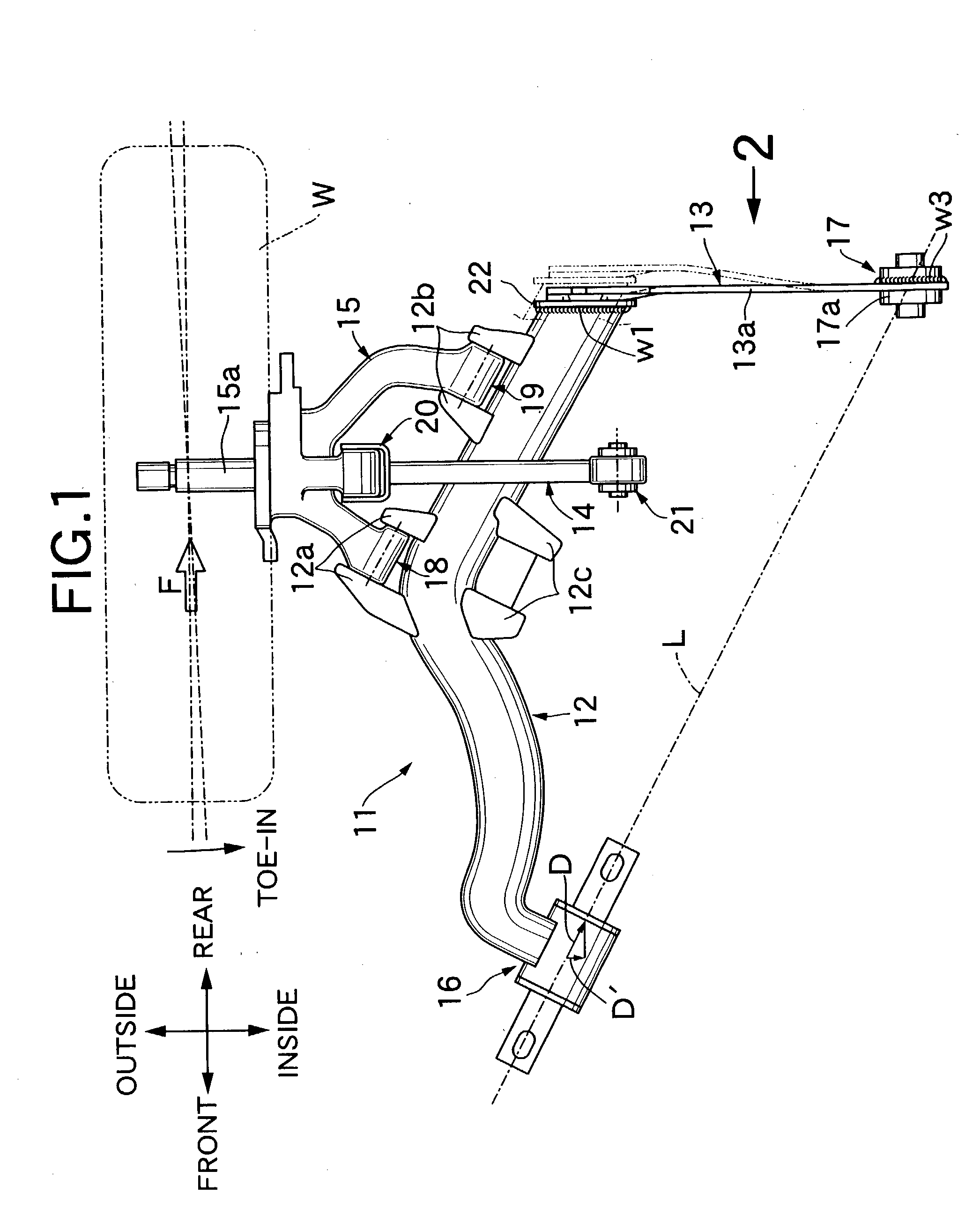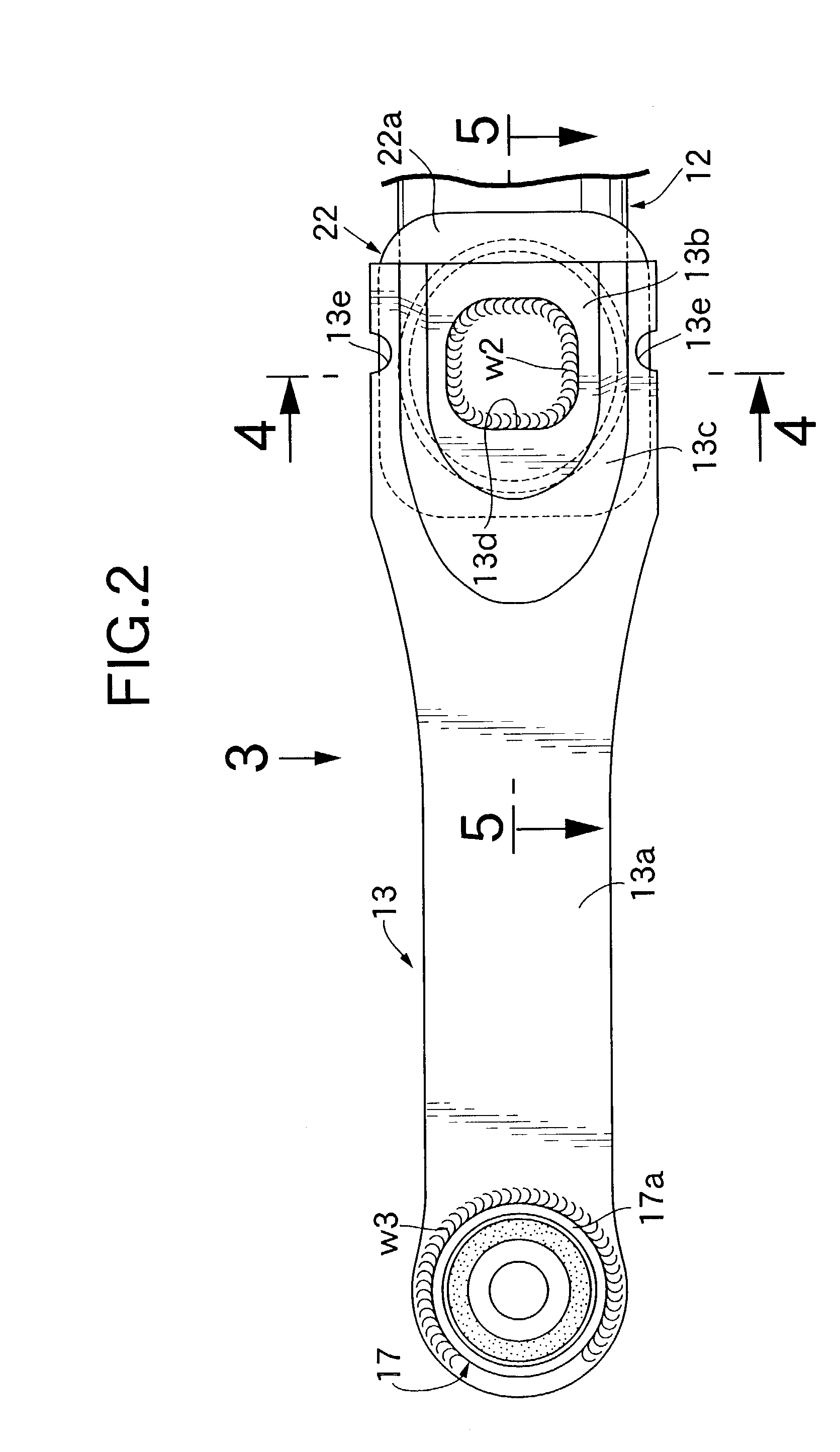Vehicular suspension
a technology for suspensions and vehicles, applied in the direction of suspension arms, resilient suspensions, vehicle components, etc., can solve the problems of reducing strength and durability, reducing the load when braking, and difficulty in obtaining a sufficient weld strength
- Summary
- Abstract
- Description
- Claims
- Application Information
AI Technical Summary
Benefits of technology
Problems solved by technology
Method used
Image
Examples
Embodiment Construction
[0028] Referring to FIG. 1, a suspension 11 suspends a wheel W (right rear wheel) and includes a trailing arm 12, a lower arm 13, an upper arm 14, and a knuckle 15. The wheel W is rotatably supported on an axle 15a extending from the knuckle 15 outward in the vehicle width direction.
[0029] The trailing arm 12 is formed by bending a pipe material having a circular cross-section, the front end thereof is pivotably supported on a vehicle body via a joint 16, the rear end thereof is welded to the outer end of the lower arm 13, and the inner end of the lower arm 13 is pivotably supported on the vehicle body via a joint 17. Provided at positions to the rear of the middle of the trailing arm 12 are front brackets 12a and rear brackets 12b pivotably supporting lower parts of the knuckle 15 via joints 18, 19. Pivotably supported via a joint 20 on an upper part of the knuckle 15 is the outer end of the upper arm 14 with its inner end being pivotably supported on the vehicle body via a joint 2...
PUM
 Login to View More
Login to View More Abstract
Description
Claims
Application Information
 Login to View More
Login to View More - R&D
- Intellectual Property
- Life Sciences
- Materials
- Tech Scout
- Unparalleled Data Quality
- Higher Quality Content
- 60% Fewer Hallucinations
Browse by: Latest US Patents, China's latest patents, Technical Efficacy Thesaurus, Application Domain, Technology Topic, Popular Technical Reports.
© 2025 PatSnap. All rights reserved.Legal|Privacy policy|Modern Slavery Act Transparency Statement|Sitemap|About US| Contact US: help@patsnap.com



